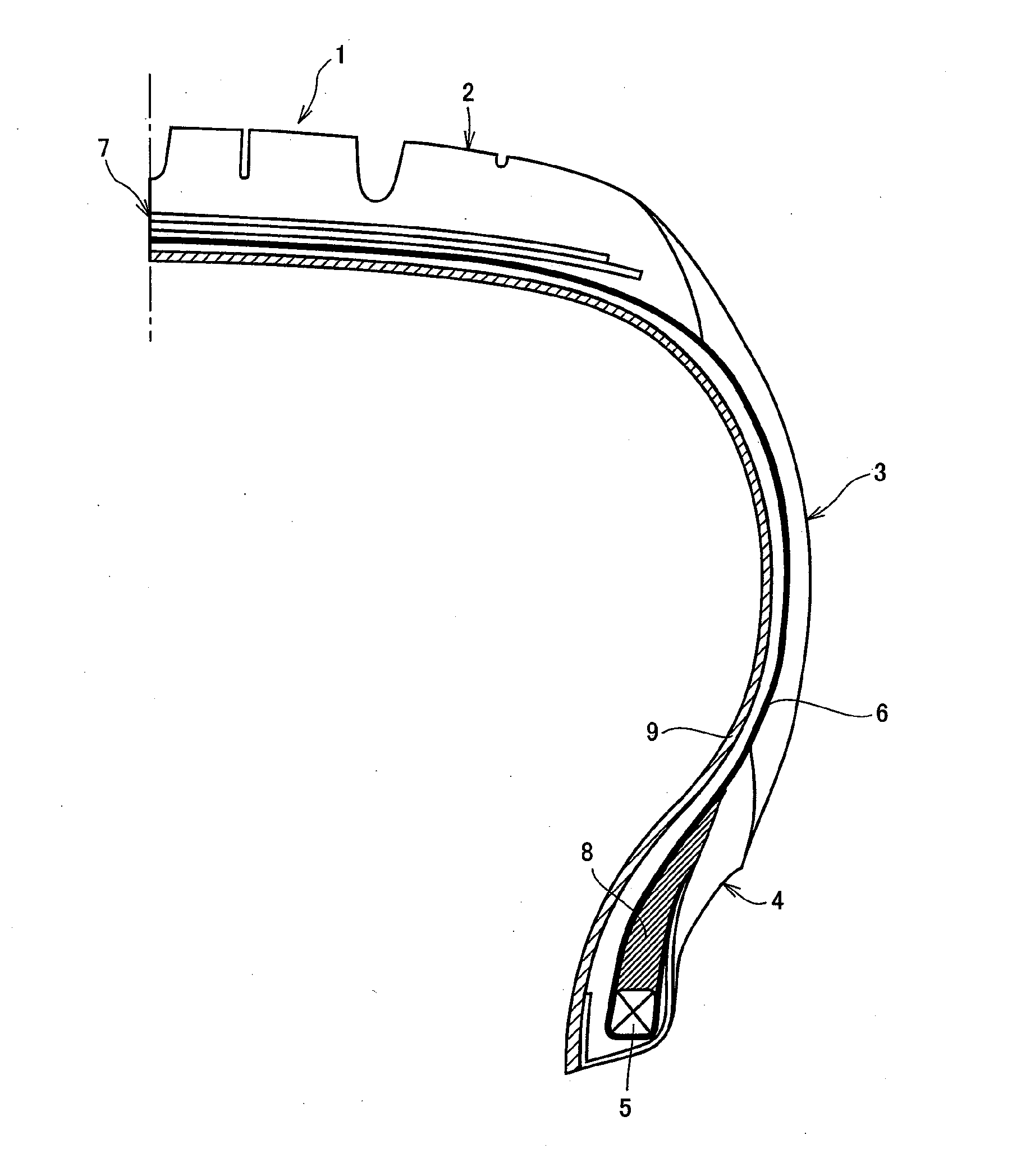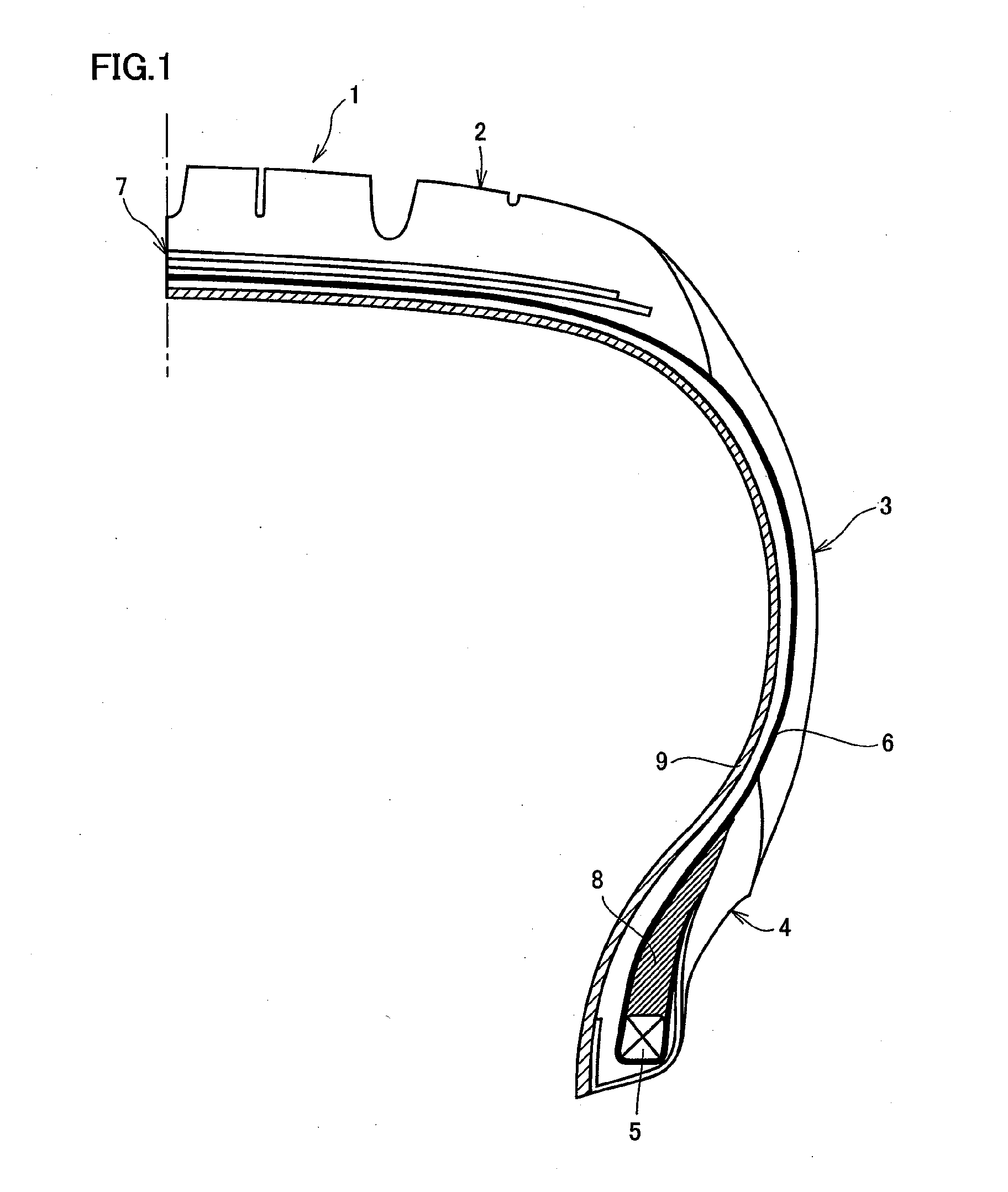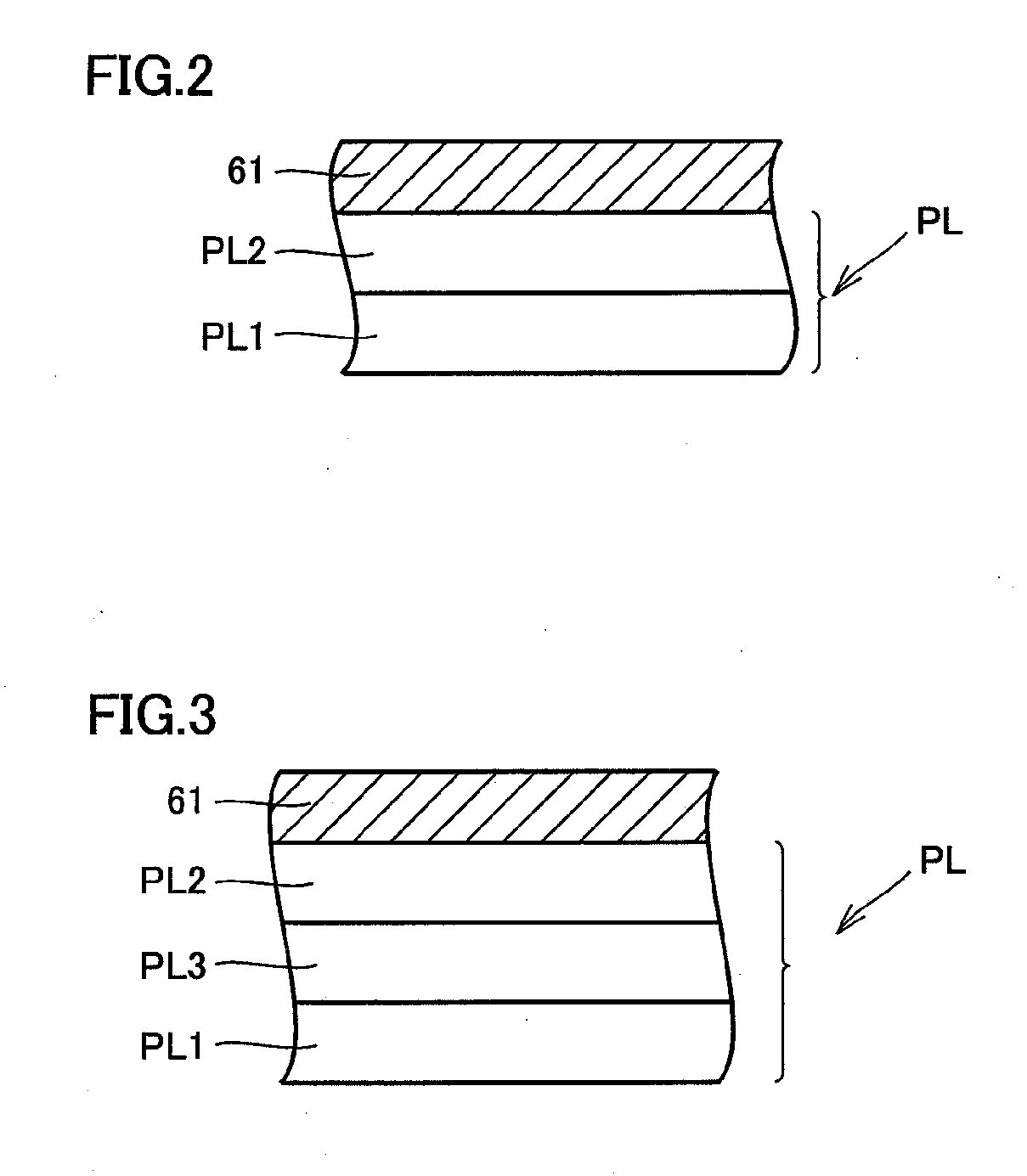Pneumatic tire
a pneumatic tire and inner liner technology, applied in the field of pneumatic tires, can solve the problems of partial deterioration of air permeation resistance, and partial deterioration of air permeation resistance, and achieve excellent air permeation resistance and flex crack growth resistance. , excellent adhesiveness
- Summary
- Abstract
- Description
- Claims
- Application Information
AI Technical Summary
Benefits of technology
Problems solved by technology
Method used
Image
Examples
embodiment 1
[0039]
[0040]A structure of a pneumatic tire in one embodiment of the present invention will be described with reference to FIG. 1. FIG. 1 is a schematic cross sectional view of the right half of the pneumatic tire. A pneumatic tire 1 has a tread part 2, and a sidewall part 3 and a bead part 4 forming a toroidal shape from both ends of the tread part. Further, a bead core 5 is embedded in bead part 4. Also provided are a carcass ply 6 arranged to extend from one bead part 4 to the other bead part with each of both ends being folded back around bead core 5 and locked, and a belt layer 7 composed of at least two plies on an outer side of carcass ply 6 at a crown part.
[0041]The two plies of belt layer 7, each being made of a steel cord or a cord of aramid fiber or the like, are usually arranged so that the cords intersect with each other between the plies and each form an angle of usually 5 to 30° with respect to a tire circumferential direction. A topping rubber layer can be provided o...
embodiment 2
[0083]
[0084]A pneumatic tire in the present embodiment can have a structure similar to that in Embodiment 1. In the present embodiment, an inner liner used for the pneumatic tire includes a first layer made of a first polymer composition and a second layer made of a second polymer composition.
[0085]
[0086]As the first layer, the one similar to the first layer described in Embodiment 1 can be used.
[0087]It is noted that the first polymer composition contains not less than 0.5 parts by mass and not more than 35 parts by mass of at least one selected from the group consisting of liquid polyisoprene, a maleic anhydride adduct of liquid polyisoprene, and a maleic acid monomethyl ester adduct of liquid polyisoprene, relative to 100 parts by mass of a styrene-isobutylene-styrene triblock copolymer. When the content of LIR, maleic acid-modified LIR, or maleic anhydride-modified LIR is less than 0.5 parts by mass, sufficient adhesiveness with the second layer cannot be obtained. On the other ...
embodiment 3
[0114]
[0115]A pneumatic tire in the present embodiment can have a structure similar to that in Embodiment 1.
[0116]
[0117]In the present embodiment, an inner liner is composed of a first layer arranged on a tire inner side and a second layer arranged to contact a rubber layer of a carcass ply.
[0118]
[0119]The first layer is made of a first thermoplastic elastomer composition containing a styrene-isobutylene-styrene triblock copolymer (hereinafter also referred to as “SIBS”), liquid polyisoprene having a carboxyl group, and imidazoles.
[0120](SIBS)
[0121]As the SIBS, the one identical to the SIBS described in Embodiment 1 can be used.
[0122]The first thermoplastic elastomer composition contains not less than 90% by mass of the SIBS in a thermoplastic elastomer component. When the content of the SIBS is less than 90% by mass, sufficient air permeation resistance performance cannot be obtained.
[0123]As the thermoplastic elastomer component, a styrene-based thermoplastic elastomer, a urethane...
PUM
 Login to View More
Login to View More Abstract
Description
Claims
Application Information
 Login to View More
Login to View More - R&D
- Intellectual Property
- Life Sciences
- Materials
- Tech Scout
- Unparalleled Data Quality
- Higher Quality Content
- 60% Fewer Hallucinations
Browse by: Latest US Patents, China's latest patents, Technical Efficacy Thesaurus, Application Domain, Technology Topic, Popular Technical Reports.
© 2025 PatSnap. All rights reserved.Legal|Privacy policy|Modern Slavery Act Transparency Statement|Sitemap|About US| Contact US: help@patsnap.com



